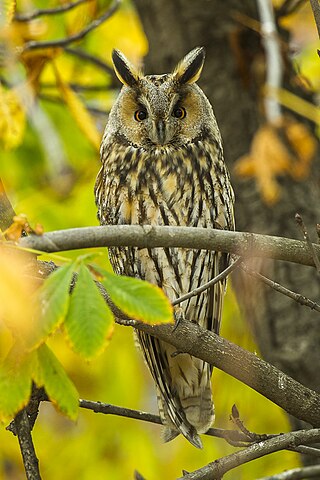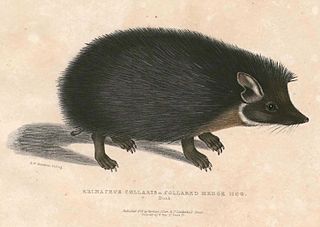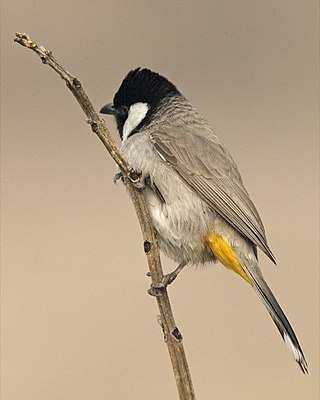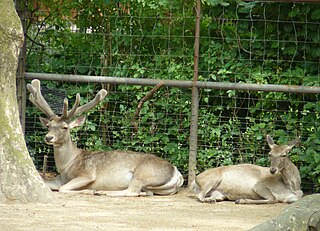
A hedgehog is a spiny mammal of the subfamily Erinaceinae, in the eulipotyphlan family Erinaceidae. There are seventeen species of hedgehog in five genera found throughout parts of Europe, Asia, and Africa, and in New Zealand by introduction. There are no hedgehogs native to Australia and no living species native to the Americas. However, the extinct genus Amphechinus was once present in North America.

The short-eared owl is a widespread grassland species in the family Strigidae. Owls belonging to genus Asio are known as the eared owls, as they have tufts of feathers resembling mammalian ears. These "ear" tufts may or may not be visible. The short-eared owl will display its tufts when in a defensive pose, although its very short tufts are usually not visible. The short-eared owl is found in open country and grasslands.

The long-eared owl, also known as the northern long-eared owl or, more informally, as the lesser horned owl or cat owl, is a medium-sized species of owl with an extensive breeding range. The scientific name is from Latin. The genus name Asio is a type of eared owl, and otus also refers to a small, eared owl. The species breeds in many areas through Europe and the Palearctic, as well as in North America. This species is a part of the larger grouping of owls known as typical owls, of the family Strigidae, which contains most extant species of owl.

The bat-eared fox is a species of fox found on the African savanna. It is the only extant species of the genus Otocyon and considered a basal canid species. Fossil records indicate this canid first appeared during the middle Pleistocene.

Gymnures, also called hairy hedgehogs or moonrats, are mammals belonging to the subfamily Galericinae, in the family Erinaceidae and the order Eulipotyphla. Gymnures resemble rats but are not closely related as they are not rodents; they are instead closely related to hedgehogs, which also belong to Erinaceidae. They are thought to have appeared in Eastern Asia before their closest relatives, and changed little from the original ancestor, which is thought to have been also the ancestor of the shrews.

Erinaceidae is a family in the order Eulipotyphla, consisting of the hedgehogs and moonrats. Until recently, it was assigned to the order Erinaceomorpha, which has been subsumed with the paraphyletic Soricomorpha into Eulipotyphla. Eulipotyphla has been shown to be monophyletic; Soricomorpha is paraphyletic because Soricidae shared a more recent common ancestor with Erinaceidae than with other soricomorphs.

The long-eared hedgehog is a species of hedgehog native to Central Asian countries and some countries of the Middle East. The long-eared hedgehog lives in burrows that it either makes or finds and is distinguished by its long ears. It is considered one of the smallest Middle Eastern hedgehogs. This hedgehog is insectivorous but may also feed on small vertebrates and plants. In captivity they can live for over 7 years.

Brandt's hedgehog is a species of desert hedgehog native to parts of the Middle East and Central Asia. Its common name derives from its having first been described by Johann Friedrich von Brandt, a director of the Zoological Department at the St Petersburg Academy of Sciences.

The Indian hedgehog is a species of hedgehog native to India and Pakistan. It mainly lives in sandy desert areas but can be found in other environments.

The Indian long-eared hedgehog is a small species of mammal native to northern India and Pakistan. It is insectivorous and nocturnal.

The white-eared bulbul is a member of the bulbul family. It is found in south-western Asia from India to the Arabian peninsula.

The Alpine long-eared bat or mountain long-eared bat is a species of long-eared bat. It was originally described from Switzerland and Austria as a species intermediate between the brown long-eared bat and the grey long-eared bat in 1965. It was later described in 2002, from France and Austria, respectively. Despite its name, this species is not restricted to the Alps, being found in Croatia, Bosnia and Herzegovina and elsewhere. It differs from other European long-eared bats, such as the brown long-eared bat, by its white underparts.

The moonrat is a southeast Asian species of mammal in the family Erinaceidae. It is the only species in the genus Echinosorex. The moonrat is a fairly small, primarily carnivorous animal which, despite its name, is not closely related to rats or other rodents. The scientific name is sometimes given as Echinosorex gymnurus, but this is incorrect.

The greater blue-eared starling or greater blue-eared glossy-starling is a bird that breeds from Senegal east to Ethiopia and south through eastern Africa to northeastern South Africa and Angola. It is a very common species of open woodland bird, and undertakes some seasonal migration.

The long-eared gymnure is a eulipotyphlan that is found in Laos. This specific type of gymnure has long ears and a long skull compared to that of others. It is also recognized for its broad forefeet, stout claws, and naked hindfeet.

The wildlife of Turkmenistan is the flora and fauna of Turkmenistan, and the natural habitats in which they live. Turkmenistan is a country in Central Asia to the east of the Caspian Sea. Two thirds of the country is hot dry plains and desert, and the rest is more mountainous. Very little rain falls in summer and the chief precipitation occurs in the southern part of the country in the winter and spring. The Caspian coast has milder winters.
The Turkestani long-eared bat is a species of bat found in Asia. Though it was initially described in 1873 as a species, for many years it was considered synonymous with the desert long-eared bat, Otonycteris hemprichii. Recently, it was recognized as a distinct species once again.

Nyctophilus major, referred to as a western long-eared bat, is a species found in forests and woodlands of Southwest Australia.
Ward's long-eared bat is a species of vesper bat in the family Vespertilionidae. It is found in mountainous regions of South Asia and adjoining regions.















